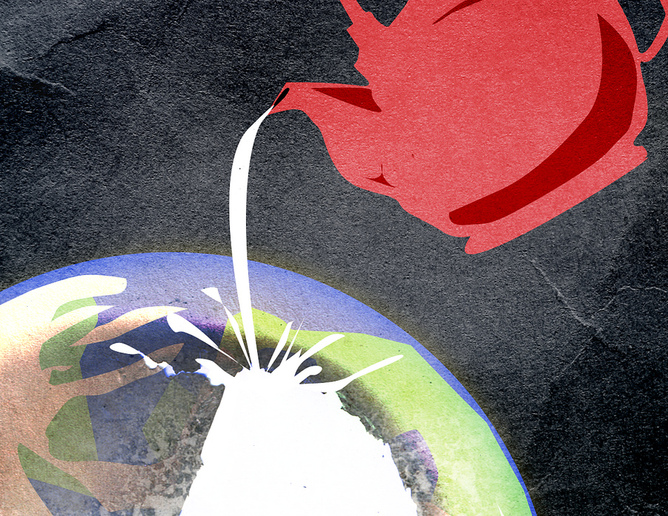In a paper published last week in Trends in Ecology and Evolution, I (Barry Brook) and my colleagues argue against the idea of an ecological global-scale “tipping point”. Here, I outline the paper’s core argument, while Professor Corey Bradshaw (not an author on the study) explains what it means for conservation practice.
NOTE: For some counter arguments, see this HuffPo piece: Tipping Points: Can Humanity Break The Planet? What strikes me is that many of the critics apparently did not read the original article, because they’ve confused/conflated what we’ve said about ecological tipping points with those observed or forecast for the climate system. Because of the inherent global interconnectivity and physical couplings of the latter, tipping points are plausible and indeed likely for some elements, such as Arctic sea ice. Not so for biomes, we argue. If you want a PDF copy of the TREE paper, email me.
Barry Brook
We argue that at the global-scale, ecological “tipping points” and threshold-like “planetary boundaries” are improbable. Instead, shifts in the Earth’s biosphere follow a gradual, smooth pattern. This means that it might be impossible to define scientifically specific, critical levels of biodiversity loss or land-use change. This has important consequences for both science and policy.
Humans are causing changes in ecosystems across Earth to such a degree that there is now broad agreement that we live in an epoch of our own making: the Anthropocene. But the question of just how these changes will play out — and especially whether we might be approaching a planetary tipping point with abrupt, global-scale consequences — has remained unsettled.
A tipping point occurs when an ecosystem attribute, such as species abundance or carbon sequestration, responds abruptly and possibly irreversibly to a human pressure, such as land-use or climate change. Many local- and regional-level ecosystems, such as lakes,forests and grasslands, behave this way. Recently however, there have been several efforts to define ecological tipping points at the global scale.
At a local scale, there are definitely warning signs that an ecosystem is about to “tip”. For the terrestrial biosphere, tipping points might be expected if ecosystems across Earth respond in similar ways to human pressures and these pressures are uniform, or if there are strong connections between continents that allow for rapid diffusion of impacts across the planet.
These criteria are, however, unlikely to be met in the real world.
First, ecosystems on different continents are not strongly connected. Organisms are limited in their movement by oceans and mountain ranges, as well as by climatic factors, and while ecosystem change in one region can affect the global circulation of, for example, greenhouse gases, this signal is likely to be weak in comparison with inputs from fossil fuel combustion and deforestation.
Second, the responses of ecosystems to human pressures like climate change or land-use change depend on local circumstances and will therefore differ between locations. From a planetary perspective, this diversity in ecosystem responses creates an essentially gradual pattern of change, without any identifiable tipping points.
This puts into question attempts to define critical levels of land-use change or biodiversity loss scientifically.
Why does this matter? Well, one concern we have is that an undue focus on planetary tipping points may distract from the vast ecological transformations that have already occurred.
After all, as much as four-fifths of the biosphere is today characterised by ecosystems that locally, over the span of centuries and millennia, have undergone human-driven regime shifts of one or more kinds.
Recognising this reality and seeking appropriate conservation efforts at local and regional levels might be a more fruitful way forward for ecology and global change science.
(more…)
Filed under: Hot News, Impacts | 2 Comments »






.png)






